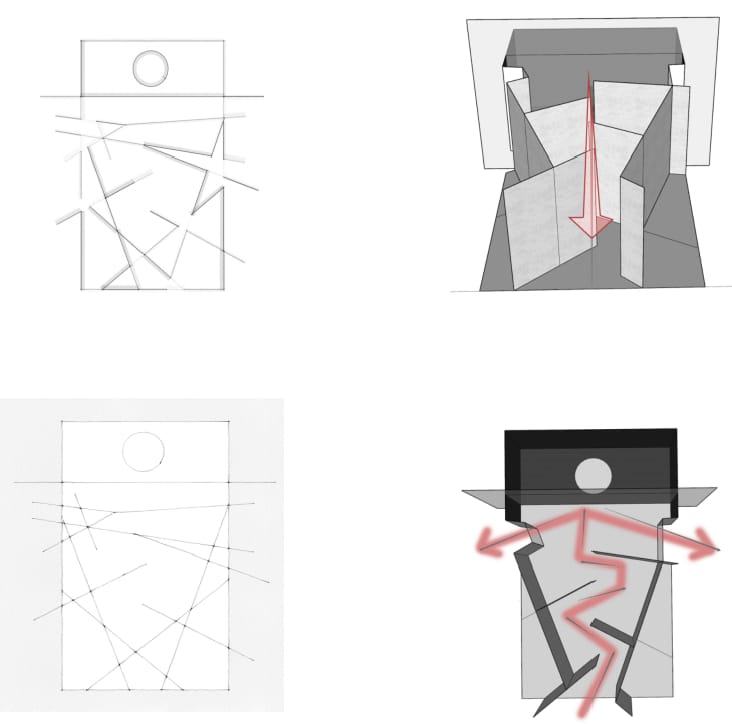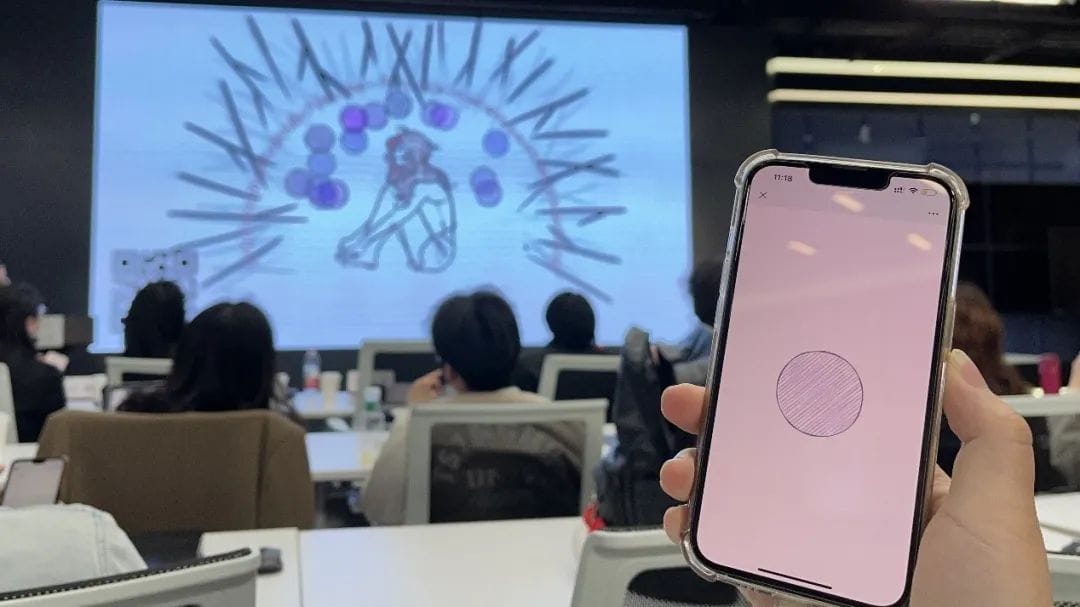Pink Bubble
Impotence of individuals under cyberviolence

Table of Contents
Collaborative project for the course “Communication Studies”.
An interactive art installation discussing the massive difficulties of individuals overcoming cyberviolence.
Self-help and social support is powerless when faced with cyberviolence.
It’s almost always the same — we see a frightening instance of cyberviolence, we get angry at those inhumane perpetrators, we mourn for the victim, and then we forget, burying all of it inside the endless sea of data. Whenever it happens, we do the same again and again, and finally — nothing changes. Ordinary netizens, especially women and girls, remain profoundly vulnerable in cyberspace.
You may be the next victim. We all may.
You may think that you, as a determined optimist with adequete social support, will stay strong and fight back. You may think you will scare the black dog away.
This is, sadly, hard. A recent victim, Zheng Linghua, suffered from intense depression and committed suicide despite having faced life with optimism, undergone proper medical treatment, and received care from family, friends, and online supporters. All those, being almost the best of what you can have for recovery, had not been successful in helping her overcome the pain.
— And all this started with a single innocent photo of her, with pink hair, sharing her joy with her grandfather by the sickbed after receiving an admission.
Heartbroken at the seemingly unstoppable havoc, we designed this interactive installation to raise awareness to the situation that individuals face immense difficulties and are almost impotent under cyberviolence, calling for regulatory actions by moderators and governments to stop the harm.
Design Details
The installation is implemented in an indoor space of around 15m × 5m.


The installation consists of a corridor, in which an animated video is projected onto the wall, and a glass-enclosed space in which a sculpture of a girl sits among spikes coming out from the walls, covered in a translucent shield — the pink bubble — around her. The shield and the spikes in this last part are both movable, controlled by a microcomputer.
The material we selected for the walls is polycarbonate (PC). Spikes on the walls are made of rubber while the ones inside the glass are metallic. The bubble shield is projected with an LED hologram fan.

We carefully adjusted the architectural design so that visitors will be able to have a peek at the pink bubble at the very end directly from the outside.

Upon entry, the audience is first introduced to the background story through the animation. The animation depicts a girl in an open space walking into a dimmed mist, blending into the colour of the corridor itself. Throughout the corridor, spikes are placed on the walls, getting denser further into the space.
At the end of the corridor, the audience is introduced to the sculpture of the girl, as well as a QR code projected onto a wall beside her. As the viewer scans the code with their smartphone, the interactive part activates, with the shield inflating, apparently protecting the girl from the spikes. Each time a new viewer joins, the shield inflates a bit more, with a light spot projected onto it with a colour corresponding to the one shown on the viewer’s screen. However, the shield keeps collapsing so that it eventually breaks regardless of the number of participants. The device then resets, the lights dimming, waiting for the next batch of visitors.
We intend that the light spots stand for the social support from individuals around the victim, and through the inevitable breakdown, intend to reveal the reality that such support alone is often not enough for a victim to get over the harm.
Interactive Prototype and Onsite Feedback
We implemented an interactive prototype through 2D computer animations and proper networking techniques (WebSocket), and were greeted with overall positive feedback at an onsite presentation.

A major setback was that the meaning of the light spots was not made clear. Some participants expressed confusion towards the circle shape on their screen, stating that it was not apparent what these actually stood for.
The audience’s affirmative response to our design confirms that there is still space for public discussion around the issue of cyberviolence, as it is still a major source of potential harm for ordinary netizens, and there are aspects of it (e.g. insufficiency of social support alone) that have not received the awareness they deserve.
Discussion and Future Work
Through our design and demonstration process, we have confirmed the feasibility of implementing our design in an indoor exhibition. We have selected proper materials for the construction of the space as well as for all the decorative and interactive parts, and have demonstrated a set of working combination of logical rules and network technologies through our prototype.
However, it is worth noting that the audience participating in our demonstration mainly consisted of university students and professors, who, albeit with varied backgrounds, may have similar viewpoints and understandings on certain social topics. We have not confirmed the appeal and the effect of the exhibition to a wider audience.
We are still considering the possibilities for improvements to our design. We are concerned that viewers who anticipate the ending may not proceed due to a lack of motivation. Hence, we are considering a redesign of the space to prevent the viewers from observing the ending in advance; alternatively, a double-route design allowing the viewers to attend the exhibition either from the interactions inside or spectate from the outside will provide the “unmotivated” viewer with another way to engage in the exhibition.
To conclude this article, we would like to call on all of our audience to attend to the reality that cyberviolence needs further intervention from entities with regulatory power, such as platform owners, moderators, governments, etc., and we believe that collective awareness and effort will be able to spawn a spindrift and make the change. And, despite this sorrowful fact that we as ordinary netizens might not be able to do much, by all means care for the victims you know. Your care will surely be a great comfort to those who are in need during the time before the ill-intentioned perpetrators get punished and the harmful atmosphere gradually dissipates. We all look forward to that day of freshness.
Try It
To have a taste of the experience, open the demonstration page🪐 on the computer, and scan the code there with a smartphone. Ideally, invite friends around so that each of you may contribute your own light spot on the shield. Alternatively, open the participants’ page🪐 in another browser window; you may open many instances of this page and see more light spots projected onto the shield.